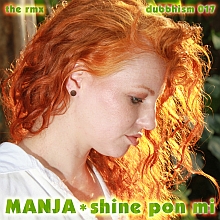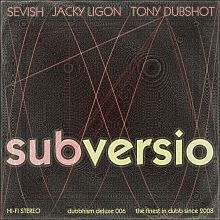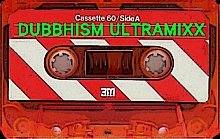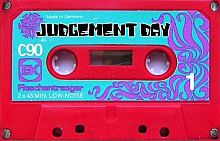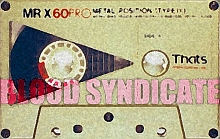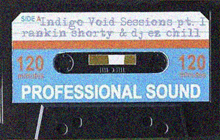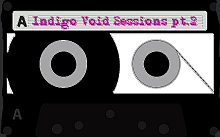
The claim: we can manipulate our brain and our state of mind by listening to binaural beats; ultra low frequency sounds in the region of 1 - 12 Hz. Our brainwaves synchronize to the frequency of these beats, making us feel creative, relaxed (alpha waves) or meditative (theta or delta waves). This kind of sync is known as entrainment.
The evidence: musical arguments
For a long time, scientists thought that humans were the only species able to sing and dance rhythmically and synchronized. But then Snowball came along. In the video Snowball demonstrates the basics of entrainment: you hear a beat and you move your body to it.
Of course there are many more species that can sync their actions: crickets harmonizing together on a summer night, Asian male fireflies flashing in unison, swarms of birds, fishes, and even metronomes. Their synchrony seems to be a spontaneous thing. Scientists like Steven Strogatz try to find out what's really going on.
When we think of music and sync, one of the first things that comes to mind is the number of beats per minute a tune has. Musical tempo typically lies somewhere between 60 and 180 bpm, which is good for dancing. You may even think of dancing as whole body-entrainment.
Brainwave-music on the other hand uses much (s)lower frequencies. You measure them in Hz, not bpm. The most 'desirable' and relaxed states of the brain produce electro-magnetic waves with frequencies ranging from 1 - 12 Hz. Binaural beat-enthusiasts try to get into a deep medi state of mind by listening to music or any other type of sound which has been spiked with these very slow rhythms. The binaural beat-technique requires headphones. Other techniques, which don't require headphones are monaural beats and isochronic tones. (Isochronic simply means the sound has a steady beat.)

The acoustic equivalent of a brainwave of ~ say ~ 10 Hz would be an extremely low bass note. An inaudible sound which the speakers of your hi-fi can't reproduce. Here's a funny thing: it's well researched (and easily verifiable) that bass notes in this frequency range can cause headache, nausea, and can even make you shit yourself. So-called 'infrasound' is a weapon used by the US Army and riot-police.
Manufacturers of brainwave cd's are aware of this problem. To avoid nasty side-effects, the dangerously low frequencies are usually consumed in a subliminal, subconscious way: beneath the level of audible hearing, masked by other sounds or by music which is specifically composed for the desired mental or emotional state.
Another 'dirty secret' of the brainwave music biz is the fact that it's very easy to create music or sounds containing binaural beats. Anyone with a laptop, some free software and a basic understanding of sound engineering can do it.

The evidence: numerological arguments
The idea of brainwave entrainment is that the mind~brain has different 'states'. Binaural beats are like sonic pills that make you feel active or sleepy, depending on their frequency. For example (keep in mind that there's controversy over the exact values):
1 Hz Delta: Lethargic
2 Hz Delta: Deep Sleep
3 Hz Delta: Dreamless
4 Hz Theta: Drowsy
6 Hz Theta: Fantasy
8 Hz Alpha: Relaxed
12 Hz Alpha: Conscious
16 Hz Beta: Focussed
24 Hz Beta: Active
32 Hz Beta: Fear (oops, that's the sound of a deep 808 kick drum)
The entrainment theory assumes that the activity of all of the 100 billion neurons in your brain can be reduced to one simple vibration (for example an alpha wave) and that your grey matter can be orchestrated using one (inaudible) sonic oscillation. But in fact it's safe to assume that there's a little bit more going on in your brain, even if you're in a zombie state of mind. Some recent brainwave research:
Looking at the progress made in brain research in recent years, the binaural beats-meme seems like a blunt, inefficient, oldskool technique based on a naive idea. The generation of low frequency oscillations using headphones and two high frequency sine waves may seem like magic to the uninitiated, but it's really basic acoustics, discovered way back in 1839 by the scientist Heinrich Wilhelm Dove.

The verdict
The human mind~brain is the most complex system in all of nature. We don't know how it really works. Entrainment on the other hand is a simple mechanism: parrots, humans and other species use it for many different things. Binaural beats are also a very simple phenomenon of acoustics. But put brain, beats and entrainment together, and the picture becomes muddy. Even the placebo effect can make you feel like you have borrowed the brain of a Zen master, if you just believe.
Exercizes
1. Scientists like to research the way the brain responds to rhythms, in fact it's a very versatile field. Even this week a very technical publication was picked up by mainstream media. Try to predict what the outcome of this research program would have been if the subjects had been parrots instead of humans.
2. Check out some of the presets of "The Ultimate Isochronic Brainwave Generator" and get a guinea pig to listen to your new Japanese minimal techno dub discovery. Make a big show of it, and observe the effect of the sound (and your story) on the guinea pig.
3. Binaural beats are a type of difference tone. Sound engineers are familiar with variations on this theme, like FM and especially ring modulation. Here's how the binaural thing works technically: illusory beats are perceived when pure tones of slightly different frequency are separately and simultaneously presented to each ear. For example, if a 315 Hz sine wave goes into the right ear and a 325 Hz one into the left ear, the brain is entrained towards the beat frequency 10 Hz, which equals 325 minus 315.
Now create your own binaural beat using a 432 Hz sine wave and Gnaural, seriously dry open source software used for actual scientific research!
4. The journal New Scientist - in the context of reporting on weapons used by the British Army against protesters in Northern Ireland - wrote about successful tests of the “squawk box,” a device said to emit two near-ultrasound frequencies (e.g., at 16.000 and 16.002 kHz) which would then combine in the ear to form a beat frequency of, e.g., 2 Hz, said to be intolerable. The Ministry of Defence denied the existence of the device.
Create your own squawk box, see if it actually works. If not, explain.
5. In 2009 a group of scientists from Berlin finally found 'proof' for something musicians have known since the beginning of time: if you get together and play music your mind~brains synchronize after a while. The whole story is available at BMC Neuroscience journal. They have movies and pdf's containing the brainwave graphs.
Go ahead and experience this type of sync for yourself: organize a percussion jam session or drumcircle, and invite a few good players to get things going.




